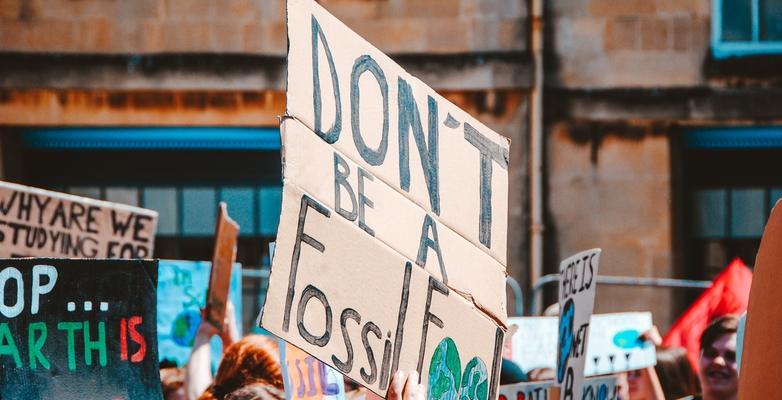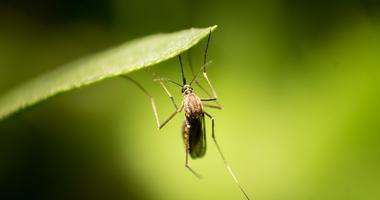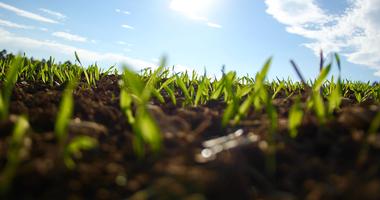
Youth Climate Activist Lily Morse Is Fighting for the Future
One young advocate is showing the world how local organizing can fight the climate crisis.
From the start of their climate activism at age fourteen, Climate Reality Leader Lily Morse knew that our world needs large-scale systemic change to effectively fight against the climate crisis. Two years later, the rising high school senior has planted deep roots in the youth climate activist space, and has big plans to bring young people’s voices to the forefront of the climate fight.
Lily grew up in a sustainability-minded household, and by middle school had developed a love for the outdoors – and a vague understanding of climate change. As they entered high school and became more educated, they were struck by the severity of the climate crisis. They began to firmly believe in the need for a just transition to clean energy, and action from local and national governments.
“I thought, well, recycling is great, but in the scheme of things, you kind of need to do something bigger. I just woke up to this need of big systemic change,” Lily told Climate Reality. “I spent a lot of time thinking, ‘oh my gosh, what can I do? I’m just 13, 14. I can’t vote. I don’t have any power in government.’”
In 2019, Lily attended a big climate strike in Los Angeles, and the fire within them was lit.
“It was the first time I saw the power of youth organizing. I was amazed by all of the people around me who were feeling the exact same things as me,” Lily recalled.
When Lily’s father sent them a link to a 2020 Climate Reality Leadership Corps training, Lily signed up right away, thrilled to get their start in the climate justice space. Lily became a Climate Reality Leader through an online training in August 2020.
“Through the training, I got the skills and knowledge to get my confidence up,” Lily said. “I thought, ‘now I know enough about the issue, and I’ve met some other young people and adults who want to help me and work with me. Now I can start making the change I want to make.’”
Soon after, Lily got involved with the Green Schools Campaign, an initiative created by the Youth Action Committee of Climate Reality Project’s LA chapter. The GSC’s goal is to transition every school to entirely renewable energy, assist student activists to launch local campaigns against fossil fuel companies, and empower them to make a difference in their own school systems. Lily has now been the executive director of the GSC for two years.
Lily said that they’ve met some of their best friends in the climate space, and speaks very highly of their fellow teenage collaborators and activists at the GSC and beyond. But making the collective youth voice heard among adults in the climate space, Lily said, isn’t always easy.
Lily spoke about youth inclusion at the Climate Reality Leadership Corps Las Vegas training in June. She was invited to speak on a panel with Climate Reality’s founder and chairman, former US Vice President Al Gore. Sitting on stage with the former vice president, 16-year-old Lily took the mic and spoke about the need for more youth inclusion within adult climate justice spaces.
“If your organizations are going to try and involve youth, you actually need to put youth in decision making spaces,” Lily said.
Lily has banded together with other youth activists to form a youth coalition, giving them a space to discuss how adult spaces can better include youth voices.
“If you have a youth program, you need to have youth representatives. We could form a much more effective climate movement if we integrate [youth and adult climate spaces] and work together,” Lily said.
Lily also spoke about how to effectively communicate about climate change with people who disagree with you. They’ve lived in Montana for two years now, and said that the social climate surrounding climate change is vastly different from their hometown of LA. They have spoken with many Montana residents that deny the existence of climate change, or recognize its existence but don’t acknowledge the need for any action.
“It’s definitely frustrating. But I just try to find that common ground. The best starting point is asking ‘what do you care about?’ And then work it back to the change we’re trying to make,” Lily said. “People [in Montana] are really passionate about public lands because there’s a ton of agriculture and fishing here. If I were having a conversation with any of them, I think we’d be able to find at least one thing to agree on that would lead back to the climate crisis.”
Burnout is very, very common in the youth climate space, Lily reported. Fighting for such expansive, imperative causes while going through high school can sap a lot of your energy. But for Lily, all it takes is a walk outside to reaffirm their connection to the climate activism movement.
“Nature and the outdoors have always kind of given me like a little tug. This is something I love so much, and I really want to be able to protect that for future generations to come,” Lily said. “Montana is a really cool place; nature is extremely accessible here. I can just go outside and think, ‘okay, this is what I'm fighting for.’”




